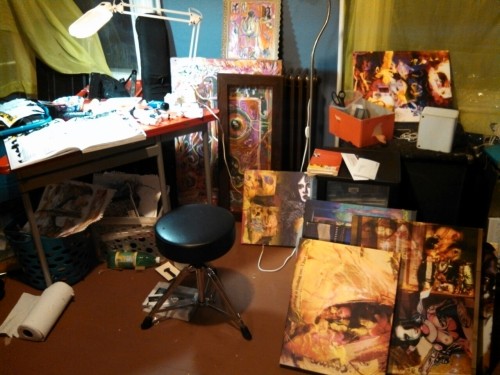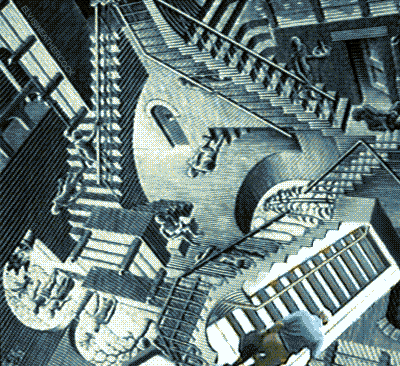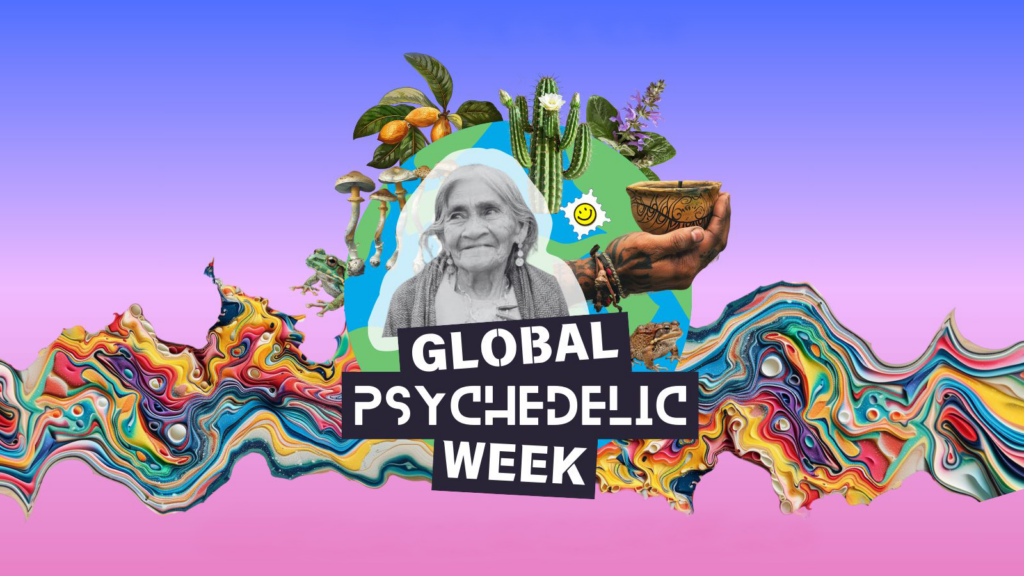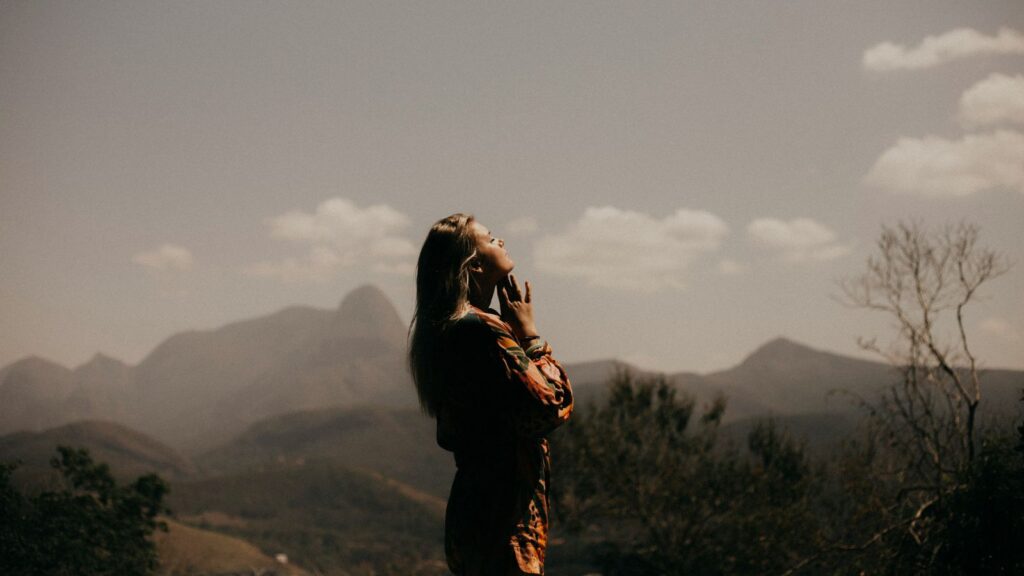Where do you create?
Do you live there or just visit sometimes?
How important is creating art to your identity?
What relation is there between the place you work, the people you surround yourself with, and the work you produce?
I’m going to riff a bit on these questions, and my own personal history with creative spaces and groups. All we can really talk about honestly is ourselves, so at least I can be honest. I’d really like to hear how others of you answer these questions, though. Feel free to comment or PM.
Pardon me if I have to cut a somewhat circumambulatory route to cut to the heart of these question, as the nature of such questions and answers are always labyrinths, and the process of hammering them into a straight line always takes something away. At the same time I have to be rather generalizing, and will use pronouns rather than given names as this is liable to get a bit personal.

The space I work and play are more or less the same, they are where I spend most of my time. If you haven’t read me or heard me or looked and asked how the pieces relate, you don’t know me—which is fine. You don’t need to. But if you wanted to, that’s where you would find me. And nowhere else.
As this isn’t the only way art can be approached, I’ve done some thinking about where it might have originated. It has always been quite natural to me, which is generally a sign that something began early. When I was a child, my father and mother were divorced. I was 4. My mother was an art therapist, and she started taking me to a Psychodramatist with therapeutic experience. For many years that was my therapist. And the ideology of art therapy around it. That has always been a powerful, unspoken part of my work and why I do it.
But it goes far beyond that. Let’s talk a little about specific spaces and what we do with them.
Just out of college, I began working in a 2000 sq. foot space with friends—soon to be business partners—and that space, once a hunting lodge, became the first of several shared studios. “Orangeface,” we called it. I hadn’t at that point really found my voice, even to the extent that every project is about losing and rediscovering ones voice, alone or in chorus, you still build up a sort of toolkit, and at that point the only tools I had really were the approach of collage and a sort of burning sense that something would come of it all if I collected and reconfigured everything I encountered. That remains a part of the process, though again it shifts and adapts to the demands of each new space, each new person, each new project.
Later we teamed up with a group that had a 13,000 sq foot space on the base of the Hudson, and later, moved out to Southern California and converted half of the house we were living in into some kind of freakish project studio that was dubbed ‘The Abyss of Hallucinations.’ That’s when I started really getting into festivals and conventions, or shortly thereafter. For a time I lived on the road, after that.
More recently, I lived in a group apartment underground that you can see as the primary setting for Clark: A Gonzomentary. It was where we lived and worked together for a year or two. The place, the people, and the projects are one and the same in my mind. You can’t really separate them and expect to have the same thing.
That’s always been what you do with space—you convert it into something that you can work with. Many Americans with an excess of space seem to turn it into some into some kind of artless, heartless museum. I’ve never understood that. Space means you can help house an art movement. And most of my life that work has been a joint project. It was not only how I came to know myself but the only way I’ve really known to know others.
I can’t say if it’s temporary or the beginning of something different, but I no longer have an art work area—because we don’t have a place of our own right now. I have a Room of My Own, but no longer occupy a communal one. Hopefully sometime again I will, although my heart tells me it will nevertheless remain somewhat different. The solitary process is something else. You have more freedom but you can’t really tell where the walls are. It’s disorienting, and it becomes much easier to wander in the labyrinth and get nowhere fast. More than finding the physical space, that means finding the right people to begin a new chapter, and that is never certain.
This is the fact that defines my life right now as “in transition.” I have a small corner carved out for myself, but I haven’t yet really figured out how to occupy it because my heart, mind, and body are all going different directions right now.
And that’s ok too. It’s just what Right Now is. My point is it is in my studio that I discover who I am and also where I am in that story. The most notable way an artist can define themselves sometimes is by not showing up.
—-
I wanted to share with you the last place I did most of my art work, and this is it. (Pictures above.)
You can see less audio equipment in this setup because I’ve been doing that less. And removing some of to make room was like the final admission that it was a real decision. The guitars hung for years after my first divorce, mostly a reminder that until I made something new with someone new those instruments were nothing but an altar to the pain I was still holding on to. When I joined a new band it was a rebound relationship. Started to clear the air but ultimately I think too much of who I was when playing music is still somehow owned by my ex for it to be something that I’ve learned to reclaim.
All the same, music has brought me so much joy making it with certain people but it was all about those relationships and finally it caught up to me that I never found new people that could go to those spaces with me in a meaningful way.
I fled that for years — those abandoned guitars, the hundreds of hours running scales imagining getting back on the horse, again in front of an audience so it is REAL.
Instead, I wrapped up two final albums and that was it. Those albums were light hearted in a way but also deeply tinged with the relationships of those involved, again it was about us, and for instance when the percussionist OD’d in the bathtub and wrote a poem while blacked it, that became the lyrics to Eye of Set.
Close the book, or turn the page. All I know for sure, and it isn’t much: Next studio I’m hoping to have a “real” drawing table again and integrate it with my wacom. But without the people to react to, will it matter? Or will I be able to focus more clearly?
—–
It would be a long and possibly tedious task to unearth all the stories behind the making of all the projects I’ve collaborated on. But a few have come to mind and maybe you’ll find something interesting in the recollection also:
Join My Cult!, the first book I wrote, was defined by a circle of friends still asking who we were, still teens some of us. I made sure everyone involved in the scene contributed something even just by inspiring a character in the weird, intentional train wreck that was. I think it is important for groups to have a chronicle. We all need group myths. The mainstream pretends to provide these things but they are like empty facades, the face of a house with nothing inside but sawdust. Successful or not, that’s what this book was, a sort of alter-ego for a group of people, at a particular place in time. And making fun of all of that, at the same time. It’s hard to find the sacred and not ruin it by taking it too seriously, at the same time. That was something I started wrestling with then, and still am today.
404 Documents, Bradley the Buyer lived with me in my then tiny studio space and we recorded and mixed the album that went hand in hand with the book we wrote together. My least known and maybe sometimes favorite book, because it cuts straight to the heart of his relationship with himself, and also my relationship with him at first – her first met me as this occult author, creator of Join My Cult, and I brought that mythos to him and his frustration and anger maybe had a new language to express itself in. But in the end, Adam, the protagonist of that book, gives up everything in his life, or has it ripped out, because those things were all false veneers. And it ends with him, like the protagonist in Pi, wise now but completely broken by the blunt force trauma of truth.
And that is exactly what happened to Bradley, the real man turned fiction turned man again, when he went into the hospital, trying to take out his eyes like Oedipus.
If you want to be my friend, or have some vindictive need to inflict pain, that’s how you’d do it. You would make art with me, and do it with everything you have and then I’ll give it all I have as well. And it will be awful, it will be glorious, it will be like the lead in the Kalavala, three ugly lies that all tell the truth. Sometimes I’m not even sure I’m alive without those things. I’m like a tube that dispenses paint.
And right now I’m having a hard time keeping on track, which is something completely new to me. Completely fresh. Like all new things it’s scary but maybe there will be growth on the other side of this. Maybe all this new self doubt and anxiety is the sharp edge that belies a new truth, waiting to be exposed.
I’ve been reaching out silently, feeling around in these spaces, because I don’t know what is next and really that means I don’t know WHO is next. What group of creatives? What muse or lover? What new physical challenge? that will be where I find it. And it will be, ultimately, where it is lost.
So this last space. I haven’t entirely made my peace with it. I’m working on that. It was supposed to be my Safe Place. I don’t mean that figuratively, I mean from trauma and my own growing sense of failure. The weight of that is so heavy some days you want to hang yourself just to lighten the load. But I didn’t. I came there at the request of my best friend. The one I said I trusted over everything else. You have all read Greek tragedy. You know where this is going.
Chronic pain and PTSD were my real collaborators when I worked at the little studio shown here, every piece defined and limited by nerve pain and mood swings. I learned to work with it. Like everything else I learned to make THAT a part of the piece. It’s all over Words of Traitors. Whatever creative work pretends to be, in reality it is all a meditation on life. If it isn’t, then where can it lead us but away from life?
So he — this friend I mentioned — and I wrote the screenplay Fallen Nation: Babylon Burning. Planned it all out, broke up the scenes and got to work. Writing with him was always even more like architecture than any other collaborations. And that’s a good thing. We learn from working with others. That’s how it works. I don’t believe in the solitary artist is an island myth. I personally adapted the script we made, which was optioned but never made, into Fallen Nation: Party At The Worlds End, the book. But that book, as much as it is about other things for strangers, is at its heart about our relationship. All the strengths and weaknesses of us as people come out when we make a world together.
My stupid ass made that move 200 miles north most of all because I didn’t understand that we would never collaborate again. For most of the time it was because he made the commitment to be a father to many children and have more still and that is something that leaves no room for the impractical dreams of a failure.
I know, that isn’t how it was, I’m not a failure, and how needy of me to expect attention like that from a best friend. That is how the narrative goes but it’s all bullshit. Not that I can deny the patently obvious. I am needy. I give all but I also ask it. I can do less but then we can’t make stories together. We can have coffee. And that seemed alright enough for a while. It was for me. Clearly wasn’t for someone else.
So when I see this picture of my work space all I see is a 20 year long friendship that seems to be over and I don’t even know why. It’s the price we all pay for remaining true to a narrative. Even whether our myths are truths or lies is completely determined by whether we are held in their thrall.
The only thing I can do now is make a new space and say: is there anyone else out there that wants to be my friend? If so, this is how we do it. The alternative is that I need to learn a new way of life. That’s scary, but possible.
Not to paint collaborating with people in a truly open way as a sunny scene. History shows one or all of us might go in a mental hospital afterward but that’s just the price of creating fictional worlds that aren’t meant to serve as an escape really.
Pans Labyrinth was an escape for the protagonist from her trauma, but it is not for those tasked with creating it.
I’m at the point in my career now, with enough under my belt that I can look and see what the deal is. My task is to get harder, or at least not less soft, as I wait for the right time to bring the hammer down.














